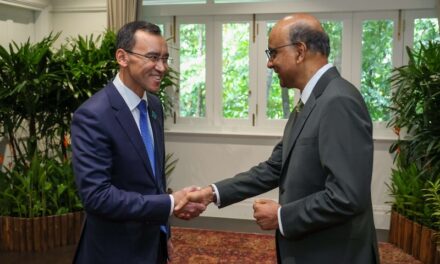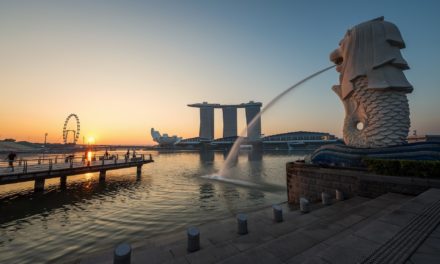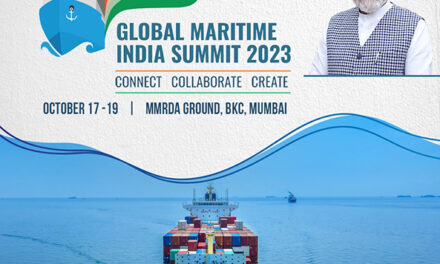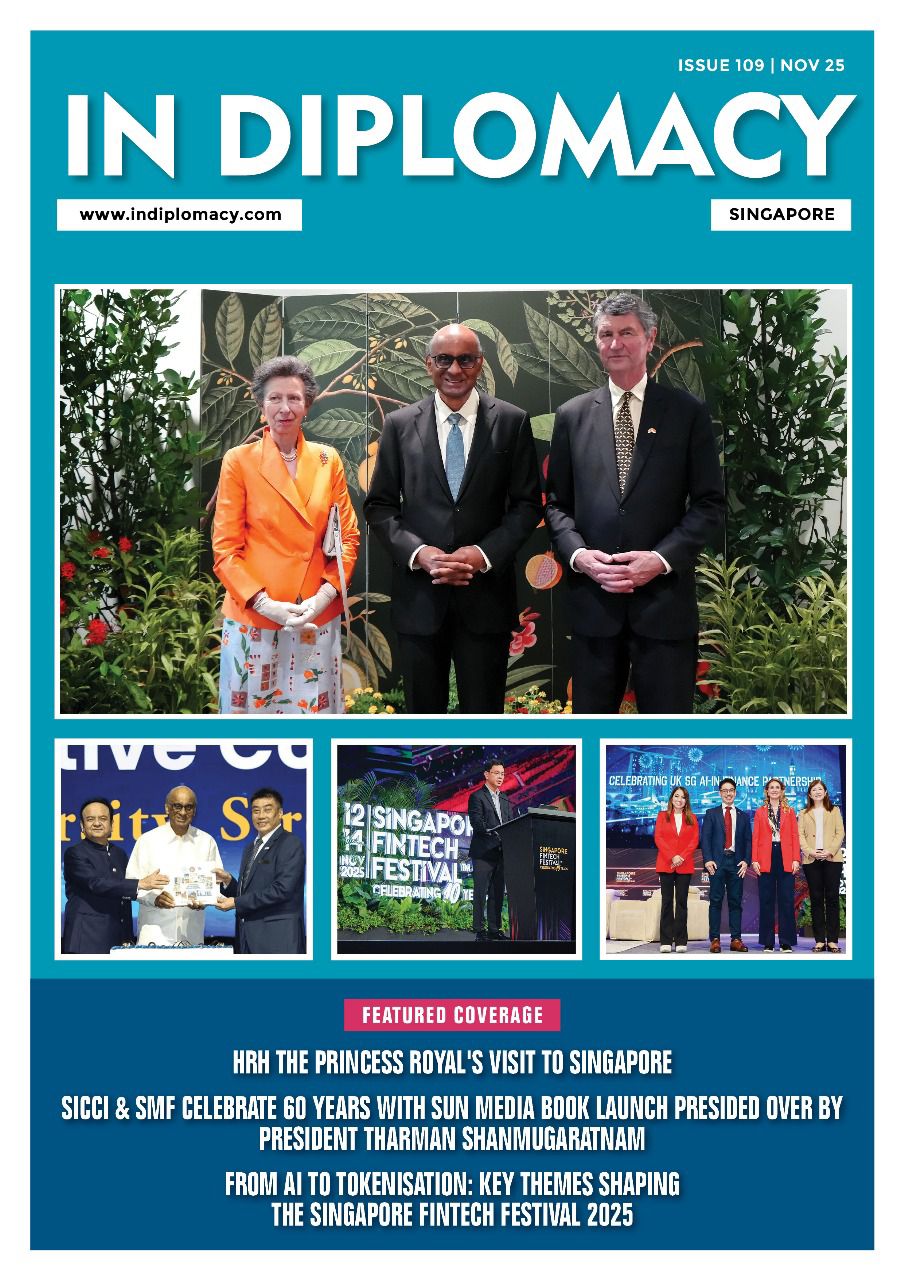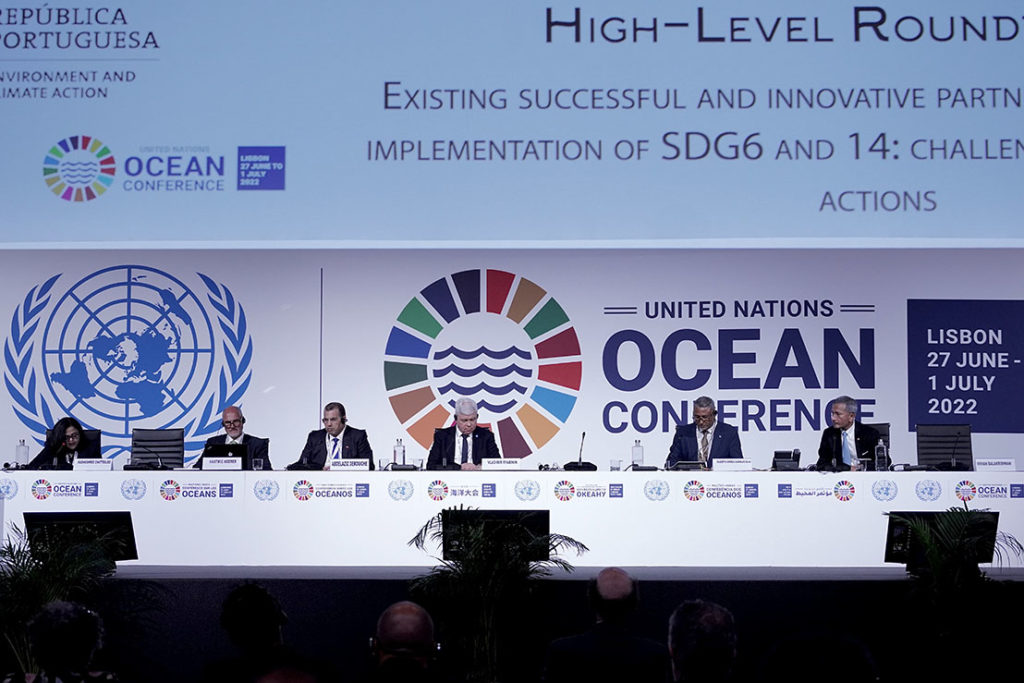
Dr Vivian Balakrishnan Opening Remarks at the High-Level Symposium on Water Ministerial Roundtable at the UN Ocean Conference in Lisbon on 27th June 2022. He highlighted how this is an opportunity to take an integrated and holistic approach in discussing water management
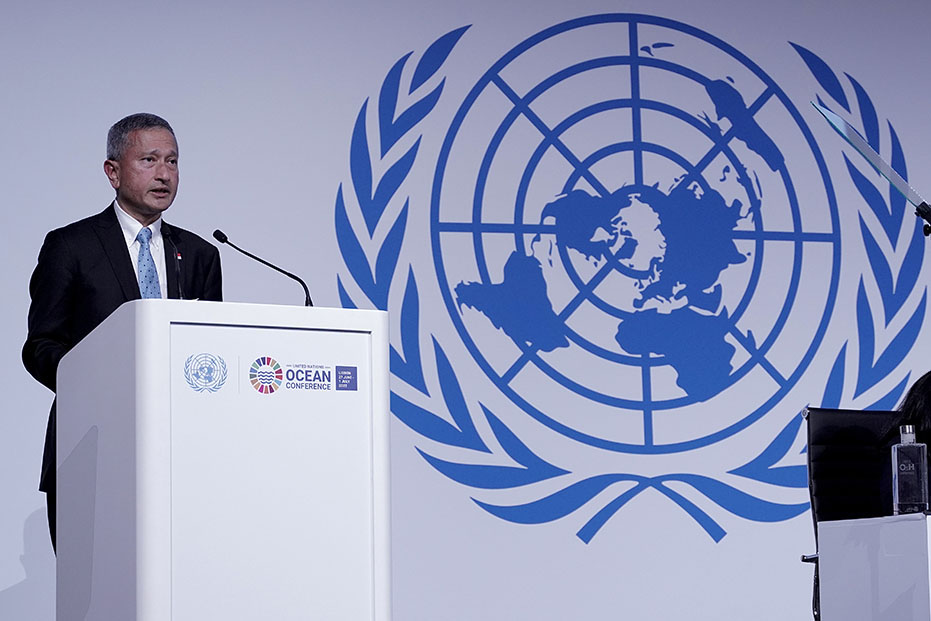
SINGAPORE’S Foreign Minister Dr Vivian Balakrishnan shared the country’s perspectives on how a small island like Singapore – just 700 sq kilometres but packed with five and a million people – tackles this “existential issue of water.” Following are extracts from his speech:
● Integration
My first point is that in Singapore, we have integrated the entire water cycle by having one single agency under one single Minister in charge of everything to do with water – water supply, used water reclamation, drainage, flooding, coastal protection and even the state of the oceans and aquaculture all under a single agency. You get policy coherence because everything is internalised within the Ministry. It enables us to have detailed, long-term land use plans. It enables us to have strict environmental protection and sustain investment over the long-term in the necessary infrastructure, and – one perhaps unpopular point here, but politically necessary – the right pricing of water.
This integrated approach in Singapore allows us to capture, to use, and to reuse almost every single drop available. Rainwater is collected by a network of waterways and drains. Almost every single stream and drain in Singapore flows into a reservoir. If you stop to think about it, that means the cleanliness of every street, every pavement and every channel is essential because ultimately, we drink tap water. We also recycle our used water into high-grade reclaimed water, which we brand NEWater. This helps us buffer against dry spells and boosts our water security. In fact, we channel all our used water to water reclamation plants. So, the first point – integration.
● Impact from Recycling
The second point is on the impact of reverse osmosis on the strategic scenario for water in Singapore. In the last decade and a half, this has completely transformed our planning norms. It has enabled us to recycle and to produce more water at an affordable price. But, and there is a very big but – energy.
In Singapore today, it means that 3.5 kilowatt hour (per cubic metre) of electricity is able to generate 1,000 litres of desalinated water. We are working on projects to bring that number down to about 2.0 kilowatt hours (per cubic metre) to produce 1,000 litres of water. Another key innovation is, even if you replace your strategic dependence on water with a strategic dependence on energy, you then need to deal with energy resilience and security. We have now deployed floating solar panels on our reservoirs, and you understand that we need to do that because we are short of land. This enables us to generate green energy for all our water needs and operate within our water ecosystem. In fact, with the completion of the latest 60 megawatt-peak (MWp) floating solar PV system, Singapore is one of the few countries to have a 100% fully green waterworks system. It is not just about being green. But you can imagine that there are security and resilience implications from being able to provide all the energy that your water system needs.
● Price of Water
My third point is to get economics right. I said this will be politically sensitive and unpopular, but without the right pricing of water, you will not get sensible and rational resource allocation, and you will not incentivise the conservation of scarce water resources. In Singapore, we peg our water price to the long-run marginal cost of producing the next available drop. In Singapore’s case, what that means is our price reflects both the capital expenditure and the operating expenditure of desalinated water – that is, the next available drop for Singapore. The politicians in this audience should immediately ask me, if you are charging the long-run marginal cost, what do you do about less well-off families? The answer is, we credit cash into the utility accounts of all these families so that despite the long-run marginal price tag, nobody goes thirsty because of inability to pay for water. This long-term approach to pricing also ensures that there is long-term guarantee for the private sector partners who invest in infrastructure to know that we are good for our money. The money is available, and our credit worthiness stands. This is a matter of national security for Singapore. In fact, what this has enabled us to do is to convert a strategic vulnerability into a strategic opportunity. Today, Singapore is a leading global hub, home to a vibrant and thriving ecosystem with more than 200 water companies and 25 water research centres spanning the entire water value chain.
● Climate Change
My fourth point is on climate change, which is an existential threat to a low-lying island city-state like Singapore. There is no question for us, observing our shores, that the sea levels are rising. Between 1970 to 2019, in the span of about 50 years, sea levels around Singapore have risen by about 14 centimetres. You may not think 14 centimetres is that significant, but if you pay attention to what the IPCC reports are predicting, that number could accelerate significantly, especially in the second half of the century. We pay great attention to climate adaptation. Despite all our efforts – and I spent many years as one of the ministerial negotiators for the Paris Agreement – we have a gnawing fear that our plans for global mitigation may not come true. If that happens, we are vulnerable. We are putting together a comprehensive long-term plan to protect our coastlines from sea levels. We hope in this session to learn from the experiences of other countries who are facing similar existential threats. We are conducting site-specific studies across our coastline of more than 300 kilometres to develop feasible coastal protection solutions, which include building conventional coastal protection measures such as tidal gates and storm surge barriers and including exploring some hybrid solutions which combine nature-based elements, such as mangroves and seagrasses.

